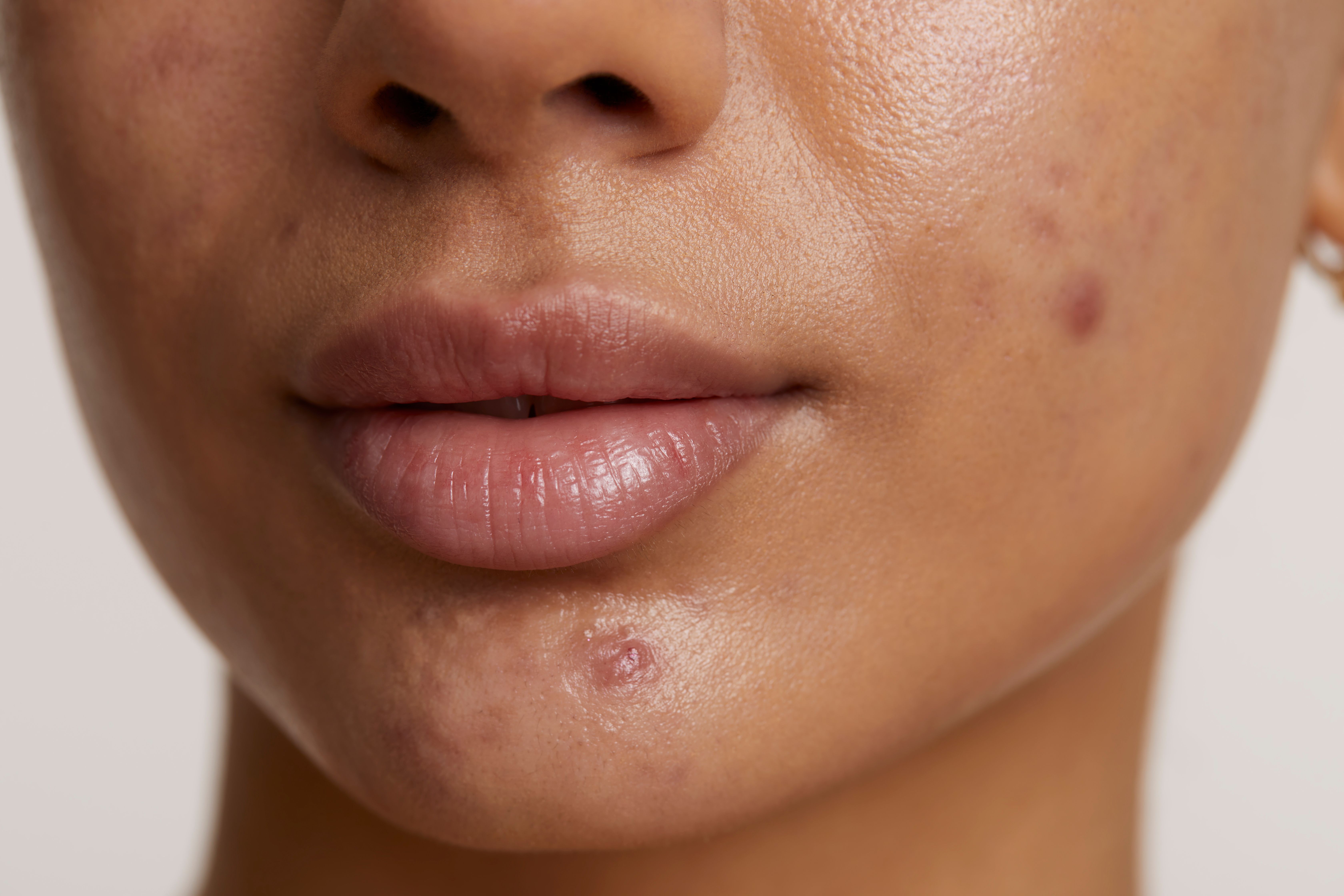- Acne
- Actinic Keratosis
- Aesthetics
- Alopecia
- Atopic Dermatitis
- Buy-and-Bill
- COVID-19
- Case-Based Roundtable
- Chronic Hand Eczema
- Chronic Spontaneous Urticaria
- Drug Watch
- Eczema
- General Dermatology
- Hidradenitis Suppurativa
- Melasma
- NP and PA
- Pediatric Dermatology
- Pigmentary Disorders
- Practice Management
- Precision Medicine and Biologics
- Prurigo Nodularis
- Psoriasis
- Psoriatic Arthritis
- Rare Disease
- Rosacea
- Skin Cancer
- Vitiligo
- Wound Care
News
Article
Retinoid-Based Regimen Led to Significant Improvements in Skin Clarity Among Patients with Darker, Blemish-Prone Skin
Author(s):
The pilot study explored the use of double-conjugated retinoid serum used in combination with exfoliating peel pads.
A skin care regimen involving the use of a double-conjugated retinoid serum and exfoliating peel pads led to significant improvements in skin clarity among patients with blemish-prone skin and darker skin tones, according to a pilot study published in the Journal of Cosmetic Dermatology.1
In this study, researchers sought to explore the efficacy of a retinoid-based skin care regimen in patients with mild to moderate blemish-prone skin and darker skin in order to both address the lack of research and to examine the efficacy and tolerability of retinoids and alpha- and beta hydroxy acids in acne.
Despite acne and hyperpigmentation being among the most common dermatologic conditions in patients with skin of color, clinical trials have lacked in researching treatment options for this demographic, wrote study authors Hartman et al.
The double-conjugated retinoid/alpha and beta hydroxy acid serum (AHARet-SA) examined in the study included AlphaRet retinol, lactic acid, salicylic acid, zinc PCA, decylene glycol, niacinamide, sodium hyaluronate, rice bran, boswellia serrata, honey extracts, bisabolol, and ginger root extracts.
A previous study2 of AHARet-SA found significant mean percent improvement in skin clarity, pore size, and patient satisfaction, leading researchers to explore its effects in patients with skin of color.
Adult female patients (n=11) were enrolled at a single dermatology center. All patients were between the ages of 30 to 55 years with mild to moderate blemish-prone skin as determined by an Investigator Global Assessment (IGA) grade of 2 or 3.
Patients with dermatologic conditions including severe acne vulgaris or cystic acne, acne conglobata, acne fulminans, rosacea, dermatitis, and psoriasis, were excluded from participation, as well as patients with irritated skin, autoimmune diseases, open wounds, or acute illness.
All patients involved in the study completed either a 2-week or 4-week washout period depending on use of cosmetic products, with longer washout periods reserved for patients using products with prescription retinoids or hydroquinone. Additionally, all patients agreed they would minimize sun exposure and apply sunscreen on a daily basis during the 12-week treatment period.
Patients were instructed to use a sunscreen stick and moisturizer in the morning and evening. In the evening specifically, patients utilized exfoliating peel pads and AHARet-SA 3 times per week. Exfoliating peel pad use was then lowered to twice weekly.
A 14% improvement in average skin clearance was noted as early as week 4 of the study. At week 8, average skin clearance had improved 33% from baseline, and by week 12, it had improved by 52%.
Additionally, pore size and skin tone (discoloration) had also improved from baseline to week 12. At week 4, pore size had improved from baseline by 3%, then 22% at week 8, and 23% at week 12. By week 4, skin tone had improved by 7%, 15% by week 8, and 34% by week 12.
In 4 weeks, 80% of patients reported minimization of pores, healthier looking skin, and less oily or greasy skin. By week 12, or the conclusion of the study, 88% of patients reported an overall improvement in skin appearance and texture, with 100% of patients reporting minimal pores, limited greasiness of skin, and a desire to continue use of the treatment regimen following the study.
"A skincare regimen comprised of a double-conjugated retinoid/AHA/BHA serum and exfoliating peel pads, a lightweight moisturizer, and a mineral-based sunscreen demonstrated substantial improvements from baseline in skin clarity, pore size, and skin tone over 12 weeks," study authors wrote. "Enrolled participants in this pilot study were predominantly African American with FST IV and V with mild-to-moderate blemish-prone skin. Participants reported high levels of satisfaction, with few reports of mild, transient dryness and irritation, none of which led to discontinuation of the study products."
References
- Hartman CL, Dyck RM, Nelson DB. A pilot study examining a double‐conjugated, retinoid‐based skincare regimen for darker, blemish‐prone skin. J Cosmet Dermatol. Published online December 29, 2023. doi:10.1111/jocd.16141
- Robinson DM, Friedmann DP, Gordon J, Wortzman M, Nelson DB. Efficacy and tolerability of a double-conjugated retinoid and alpha hydroxy acid cream in participants with mild to moderate blemish-prone skin. J Drugs Dermatol. 2022; 21(1): 54-59.
Newsletter
Like what you’re reading? Subscribe to Dermatology Times for weekly updates on therapies, innovations, and real-world practice tips.












